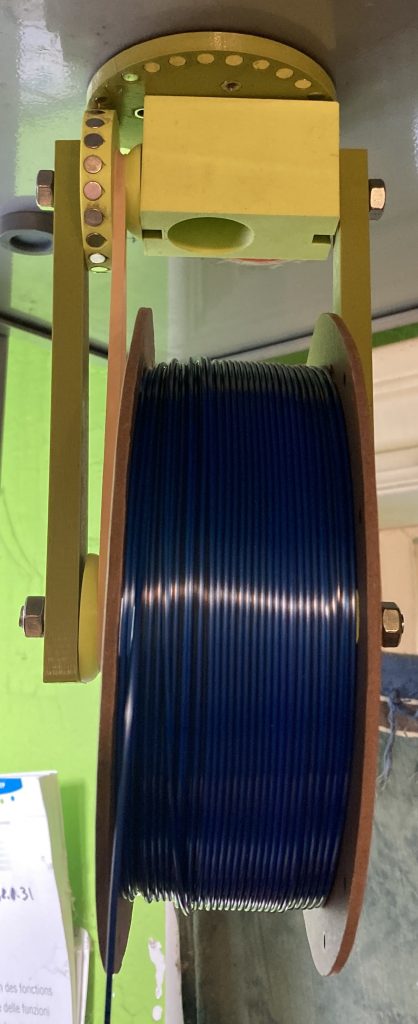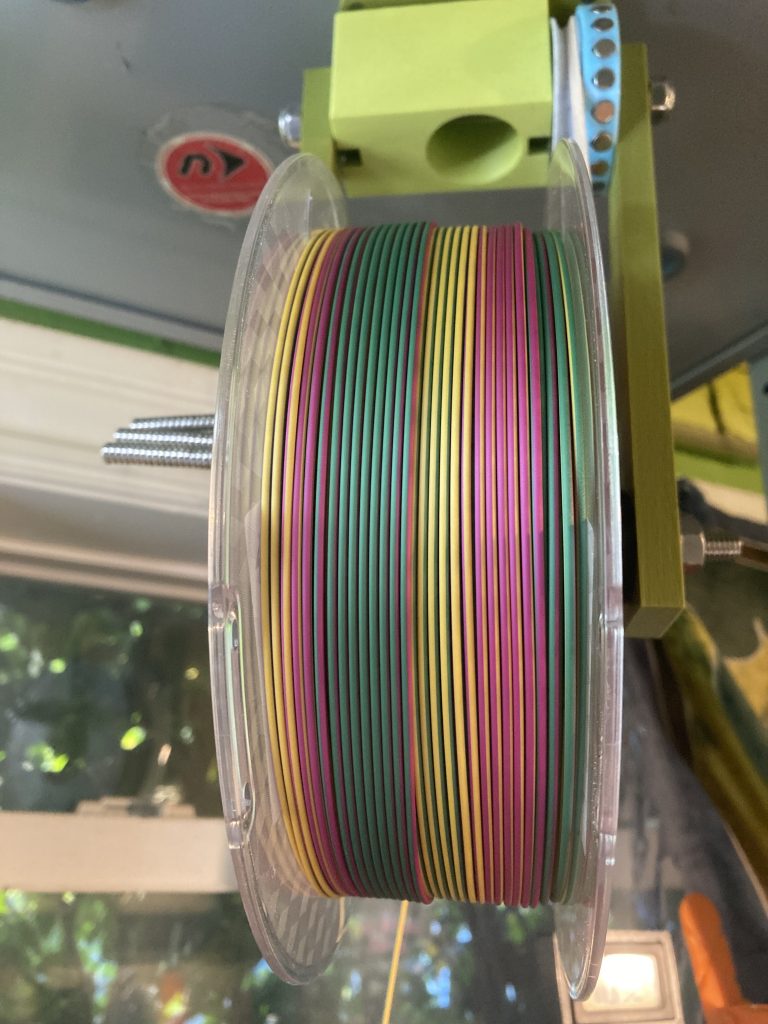My experience with various coextruded filaments.
My impression of any given filament is based on these criteria:
- Are the colors vivid
- Is the spool consistently wound
- Does the spool have sufficient opportunities to attach the end of the filament
- Is the spool hub similar to other sized spool hubs (55mm)
- Is the spool cardboard or plastic (I prefer cardboard)
- Does the filament print easily when dry
Eryone
So far, my favorite coextruded PLA filament I’ve tried is by Eryone. I use a 2mm Flange Sleeve on the pulley side of the cardboard Eryone spools but no sleeve is really needed on the other side, although the sleeve doesn’t hurt. Not only is cardboard recyclable, but it doesn’t slip easily on the spool flanges.
The colors are great and I’ve tried a few spools.
The spools are carefully and tightly wound so the color doesn’t change except where the spool rotator changes it.
The spool hubs are bigger than 55mm, but they have plenty of spots to stick the end of the filament. Some of the spools I’ve received are cardboard and some are plastic.
Eryone PLA filament prints perfectly for me on my Prusa Mk3S+ printer.

Notice how the whole spool looks blue even though this is red/green/blue coextruded filament? That is because the filament is not twisted when it is put onto the spool. This is idea for the spool rotator.
Amolen
My second favorite coextruded PLA filament is by Amolen. I use two 4mm Flange Sleeves to hold my spools of Amolen filament. If it slips, put some rubber cement on the sleeve and let it dry, or put a thin layer of electrical tape around the outside of 3mm sleeves to increase friction.
Vivid colors, but the spools are plastic and they are wound in a way that the color orientation changes throughout the spool. It would be interesting for people who don’t have a spool rotator, which I suppose is more people than not, so I suppose more people would find the Amolen interesting because it changes color on its own. But, for use with the spool rotator it isn’t ideal.
The spool hubs are bigger than 55mm but they have plenty of opportunities to secure the end of the filament.
Amolen PLA filament prints perfectly for me on my Prusa Mk3S+ printer.

See how the colors slowly change across the roll? This filament was twisted when it was put on the roll to give you the same kind of effect as the spool rotator. But, there is no way to change the rate of color change on a pre-twisted spool like this the way you can by changing pulleys on the spool rotator.
I still use this filament on my projects, but if I hang it correctly the rotation and the spool twist work together for an even slower color rotation. A slower rotation is ideal for bigger prints that use more filament, to avoid narrow strips of color.


Hello3D
I use two 4mm Flange Sleeves to hold my spools of Hello3D filament. If it slips, put some rubber cement on the sleeve and let it dry, or put a thin layer of electrical tape around the outside of 3mm sleeves to increase friction.
The roll of Hello3D coextruded PLA filament printed well enough, and it was consistently wound. But, the spool only had one pair of small holes for securing the filament. Seriously, it was never close to the end of my filament when a print finished and that was frustrating. I didn’t want a long end sticking out, nor to put a big bend several inches from the end of the filament. The spool hub was way too big.
Nonetheless, I loved their vivid colors and put up with the rest.

See how the colors slowly change across the roll? This filament was twisted when it was put on the roll to give you the same kind of effect as the spool rotator. But, there is no way to change the rate of color change on a pre-twisted spool like this the way you can by changing pulleys on the spool rotator.
I still use this filament on my projects, but if I hang it correctly the rotation and the spool twist work together for an even slower color rotation. A slower rotation is ideal for bigger prints that use more filament, to avoid narrow strips of color.